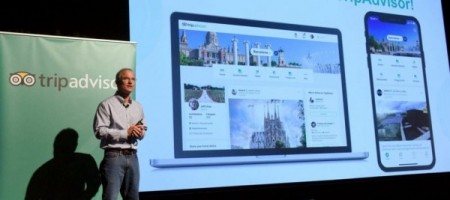No, don’t stop experimenting with new technologies after reading this. We want you to bring new things to the market to make things better for us and to keep the biggies on their toes. However, stop making your world revolve around how things are going on in the background and put a stronger focus on how the users are getting it done. It is certainly a big deal for you and many others like us, but the users don’t care. They will install your app because you are solving a pressing problem. ‘How’ isn’t something they can be bothered about (many people searching on metasearch websites don’t know where they booked, get the hint). During the recently concluded Startup Knockdown, experts from the industry highlighted that a large number of new players don’t put enough stress on perfecting the user experience.

We asked developers, designers, users and everyone else we could ask on social platforms and communities on what are things that most websites and apps get wrong. Here are some of the points that were highlighted.
Not being obvious
Will the buy button add it to my cart or take me to the checkout page? I want to add another hotel booking, will I have to come back? People don’t want to be left guessing about what effect their action will have. Make the content obvious for your users instead of leaving it at their guess. This case study from BlaBlaCar elaborates the point very well.
Lorem ipsum
If you are designing first and putting content second, stop immediately. Lorem ipsum shouldn’t be the content for you to start. Using generic text prevents you from tailoring the design perfectly to the content and the function it is going to serve. Start with the content and build your design around it and it will make a world of difference.
Pushing the route
You have drawn up a nice flowchart on the glass wall in your office. You have got the perfect idea of how the user can reach a certain feature. Are you sure the user would follow this path? Good navigation is important but nothing to be proud of. The flowchart is there because you couldn’t fit the useful things on home. Y belongs to the X category according to you but will everyone look at it the same way?
Forcing decisions
I can complete the booking only if I download the app? Most people would either start looking for other websites offering lower fares or would uninstall the app right after they have made the booking. Extorting downloads out of users won’t let you gain anything, except maybe their frustration. Mobile web isn’t dead. If anything, it is a huge opportunity in travel space as many experts highlight.
Expecting to read
Don’t expect your users to read, ever. The best they are going to do is skim through the text picking up some words and phrases as they progress. Unless it is a detailed post on your blog, cut down on text, divide it, highlight the key bits or use visual cues.
Clutter
Every new button could be a lost click. Even with not-so-obvious content, users are more likely to click on something if there are fewer options. Offering too many things in one app or website is nothing to be proud of, not until you are using some AI witchcraft to get things done without too many inputs from the user.
Deformed forms
While a form is just meant to get user information, a badly designed form can drive away customers at the check-out page. Imagine losing a customer who was willing to pay only because you added compulsory fields that weren’t required. Even if there are too many details required, it is better to categorise them like ‘Personal details’, ‘Address’, etc. and divide the form in parts rather than creating a form that requires scroll. You can check out badforms.com to discover some of the mistakes to avoid while designing a form.
What are the other common mistakes you think ruin the user experience? Do share with us.



















